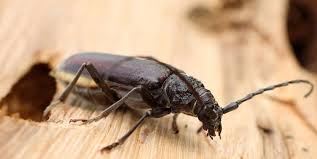Beetles are among the most diverse insects on the planet, and while many are harmless, certain species can become unwelcome guests in our homes. From pantry invaders like the flour beetle to wood-destroying pests like the powderpost beetle, controlling these beetles is crucial for maintaining a healthy living environment. In this article, we will explore five effective strategies for controlling common household beetles, helping you keep your home beetle-free.
1. Regular Inspections and Monitoring
The first step in controlling household beetles is conducting regular inspections. By keeping an eye out for signs of beetle activity, you can catch infestations early before they escalate. Here are some key areas to check:
- Kitchens and Pantries: Look for beetles in food storage areas, especially near grains, nuts, and dried fruits. Common culprits include the confused flour beetle and the Indian meal moth.
- Wooden Structures: Inspect wooden furniture, beams, and flooring for signs of beetle damage. The powderpost beetle can cause significant harm to wooden structures.
- Basements and Attics: These areas can harbor moisture-loving beetles. Check for damp spots where beetles might thrive.
Regular inspections allow you to monitor the situation and take action before infestations become severe. For a detailed guide on identifying various beetle species, visit PestWorld.
2. Seal Entry Points
Sealing entry points is a critical strategy in controlling household beetles. Many beetles can enter through small cracks and crevices. Here’s how to effectively seal your home:
- Windows and Doors: Ensure all windows and doors close tightly. Install weather stripping or door sweeps to eliminate gaps.
- Walls and Foundations: Inspect the exterior of your home for cracks in the foundation or walls. Use caulk or sealant to close these gaps.
- Vents and Ducts: Check vents and ducts for openings. Installing mesh screens can help keep beetles out.
By sealing potential entry points, you can significantly reduce the chances of beetles invading your space. This proactive measure is essential for maintaining a beetle-free home.
3. Maintain Cleanliness and Hygiene
Keeping your home clean is one of the most effective strategies for controlling beetles. Many beetles are attracted to food sources, so proper sanitation is crucial. Here are some cleaning tips:
- Store Food Properly: Use airtight containers for grains, flour, and other food items. This prevents beetles from accessing their food source.
- Regular Cleaning: Vacuum regularly, especially in kitchens, pantries, and under furniture. Pay attention to crumbs, spills, and food debris that may attract beetles.
- Dispose of Trash Properly: Ensure that garbage bins are sealed and emptied regularly. Leftover food in trash cans can attract beetles and other pests.
By maintaining cleanliness and hygiene, you create an uninviting environment for beetles, helping to control their presence in your home.
4. Utilize Natural Deterrents
In addition to cleaning and sealing, utilizing natural deterrents can effectively control household beetles. Some common natural remedies include:
- Diatomaceous Earth: This natural powder is made from fossilized algae. When sprinkled in areas where beetles are active, it can dehydrate and kill them. Be sure to use food-grade diatomaceous earth for safety.
- Essential Oils: Certain essential oils, such as peppermint and eucalyptus, can deter beetles. Mix a few drops with water in a spray bottle and apply around entry points and infested areas.
- Herbs: Planting herbs like mint and basil near entryways can also repel beetles. Their strong scents are unpleasant to many insects.
These natural solutions are eco-friendly alternatives to chemical pesticides and can be effective in controlling beetle populations in your home.
5. Professional Pest Control Services
If you find that your efforts to control beetles are not yielding results, it may be time to consider professional pest control services. Here’s why professional intervention can be beneficial:
- Expertise and Experience: Pest control professionals have the training and experience to identify the specific types of beetles in your home and understand their behavior.
- Tailored Treatment Plans: A pest control expert can create a customized treatment plan based on your specific infestation and the layout of your home.
- Ongoing Monitoring: Many pest control companies offer ongoing monitoring and maintenance services, ensuring that beetles do not return after treatment.
For more information on finding a reputable pest control service, check out the National Pest Management Association.

Conclusion
Controlling common household beetles requires a multifaceted approach that includes regular inspections, sealing entry points, maintaining cleanliness, utilizing natural deterrents, and, if necessary, seeking professional help. By implementing these five effective strategies, you can significantly reduce the likelihood of a beetle infestation and protect your home.
Beetles may be a common pest, but with the right strategies, you can keep them at bay and enjoy a pest-free living environment. Stay proactive, and remember that early intervention is key to successful beetle control.

